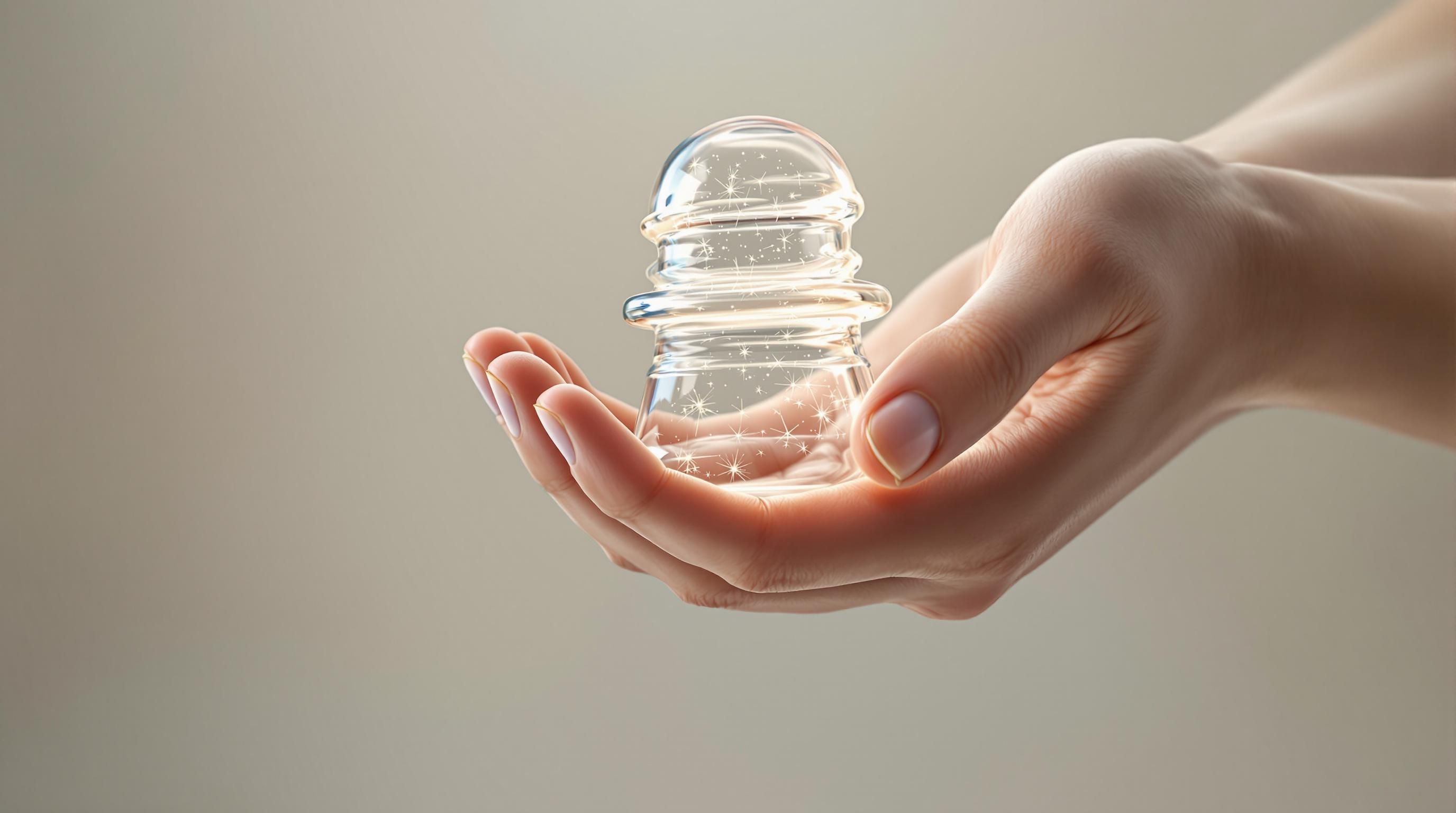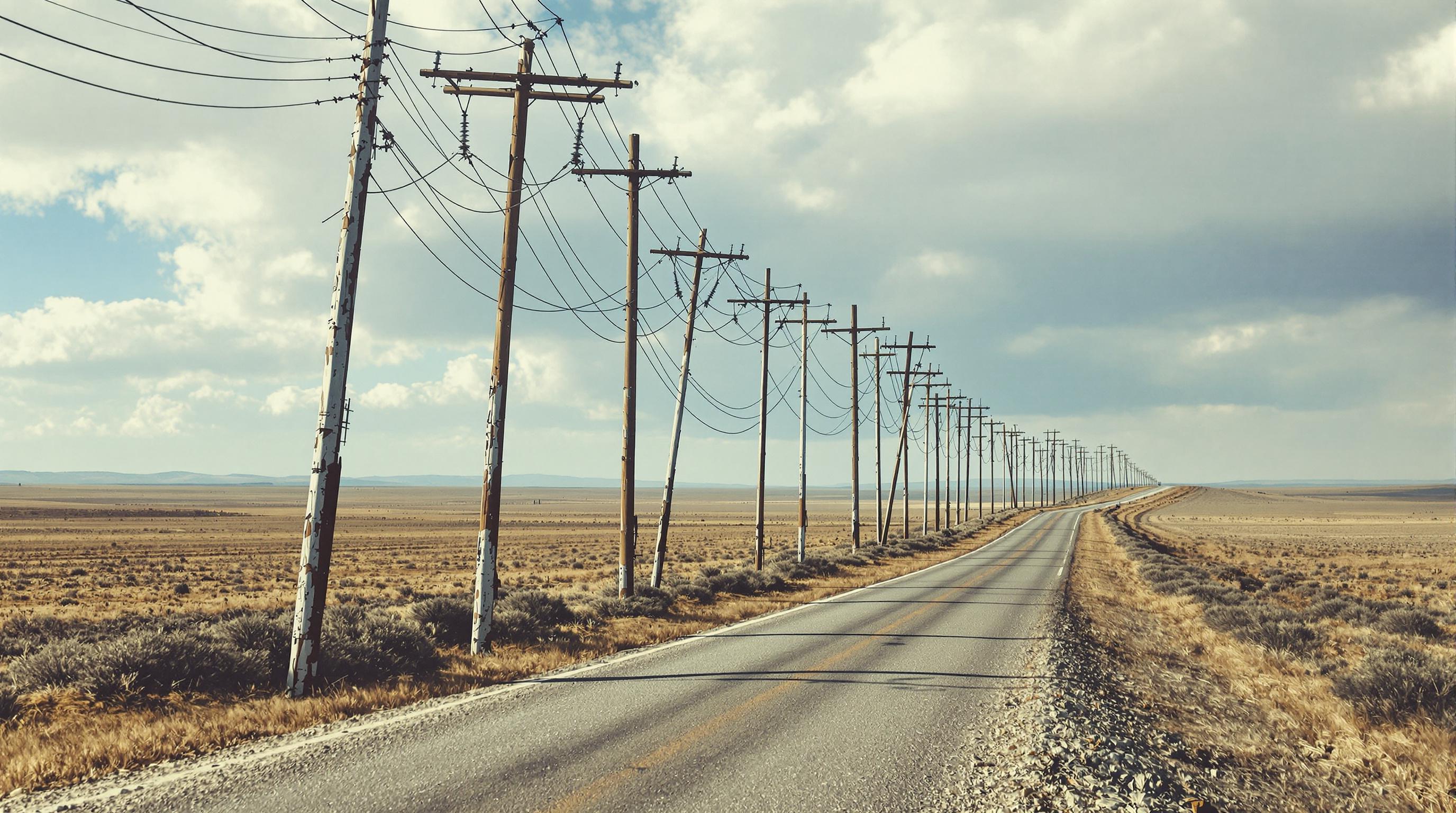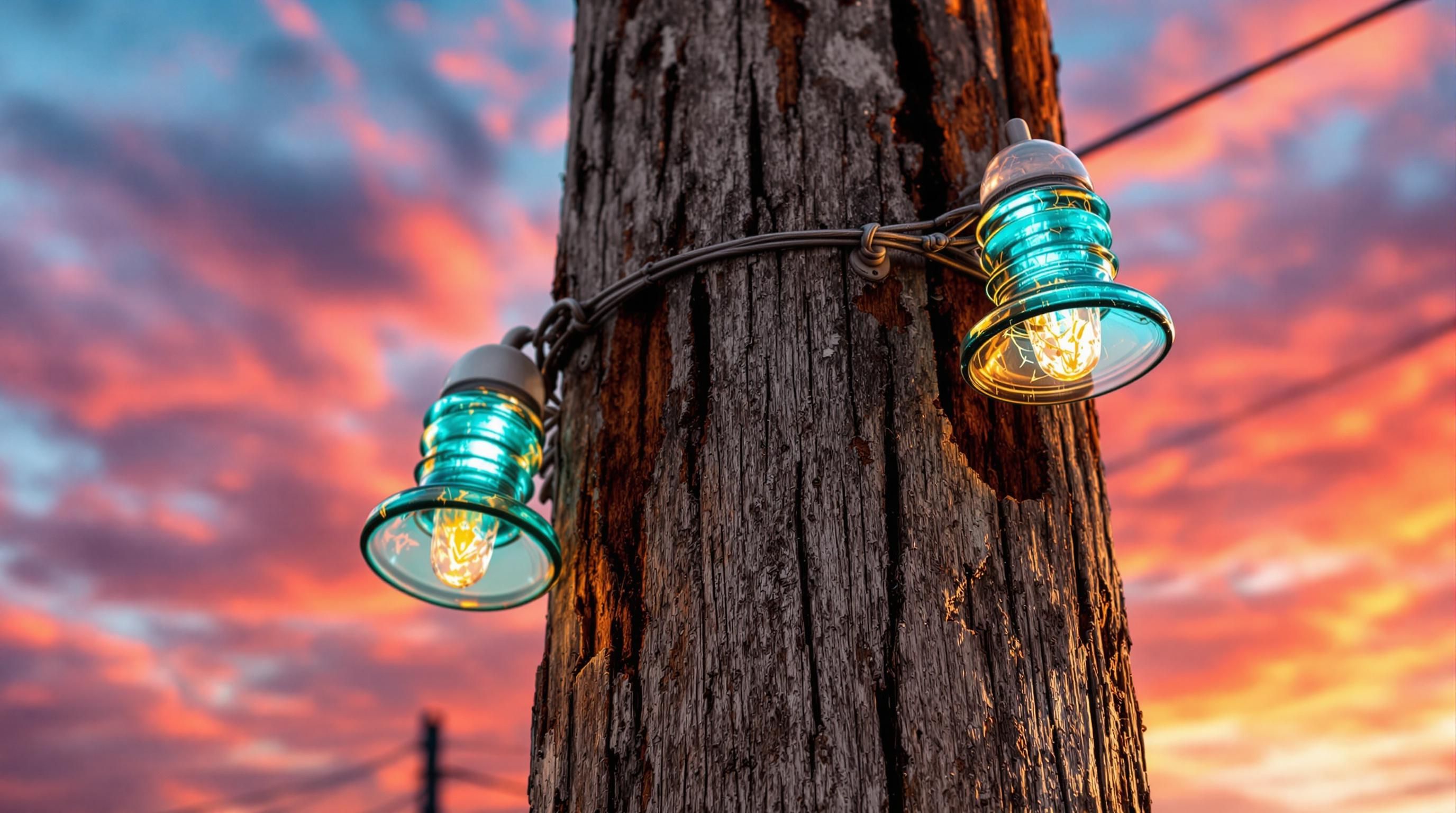Introduction to Vintage Glass Insulators
Glass insulators once served a crucial utilitarian purpose in America’s developing telecommunications and electrical infrastructure. These functional glass pieces prevented electrical currents from grounding out on wooden poles and crossarms. Today, these technological relics have transformed into highly sought-after collectibles, with some rare specimens fetching thousands of dollars at auction.
Whether you’ve discovered old insulators in a family collection, spotted them at a flea market, or are actively building your collection, understanding their value is essential. This comprehensive guide will help you identify, evaluate, and determine the worth of your vintage glass insulators in today’s collector’s market.
The History and Purpose of Glass Insulators
Glass insulators were first used in the 1840s for telegraph lines, then later for telephone lines and electrical power distribution. Their primary function was to isolate and support electrical conductors, preventing current leakage by keeping the wires from directly contacting poles or other supports.
As technology evolved, glass insulators were eventually replaced by more modern materials like porcelain and polymer composites. This transition left behind millions of glass insulators, many of which were salvaged by collectors who appreciated their historical significance and aesthetic appeal.
Evolution of Glass Insulators
- 1840s
Telegraph Era Begins
The first glass insulators appeared for telegraph lines, with simple designs that would evolve significantly over the next century. - 1870s-1890s
Telephone Expansion
The telephone’s invention and rapid adoption created greater demand for insulators, leading to production increases and design refinements. - 1920s-1940s
Peak Production Period
This era saw the most extensive use of glass insulators before alternative materials began to replace them. - 1950s-1970s
Decline and Collecting Begins
As glass insulators were phased out, early collectors began salvaging them, establishing the foundation for today’s collector market.
Key Factors That Determine Insulator Value
Understanding what makes certain insulators more valuable than others can help you assess your collection or make informed purchasing decisions. Here are the primary factors that determine an insulator’s worth:
Color
Color is often the most significant value factor for glass insulators. While aqua blue and clear glass were the most common production colors, insulators in rare hues command substantial premiums.
Most Valuable Insulator Colors
- Common Colors (Low Value): Clear, aqua, light green ($2-$15)
- Uncommon Colors (Medium Value): Amber, dark green, purple ($20-$100)
- Rare Colors (High Value): Cobalt blue, yellow, red, milk glass ($100-$5,000+)
The color’s intensity and consistency also affect value. Insulators with swirls, streaks, or unusual color variations often bring higher prices from collectors seeking unique specimens.
Manufacturer and Age
Certain manufacturers produced more desirable insulators due to their craftsmanship, distinctive designs, or limited production runs.
- Hemingray: Among the most prolific and collectible manufacturers
- Brookfield: Known for quality and variety of styles
- McLaughlin: Rare pieces with distinctive design features
- Whitall Tatum: Produced many desirable colors and styles
Older insulators, particularly those from the 19th century, generally command higher prices than those from the mid-20th century, though rare examples from any period can be valuable.
Style and Design (CD Numbers)
Insulators are classified using “CD numbers” (Consolidated Design), a standardized identification system developed by collectors. This system categorizes insulators based on their shape, size, and design features.
Some CD numbers are inherently more valuable due to their rarity or historical significance. For example, a common Hemingray-42 (CD 154) might sell for $5-10, while a rare CD 162 Hemingray in cobalt blue could bring $1,000 or more.
Condition
As with most collectibles, condition significantly impacts value:
Insulator Condition Assessment
Check applicable items to determine condition
- No chips, cracks, or flakes
- Original finish intact (not cleaned with harsh methods)
- Clear glass with no internal cloudiness
- No significant scratches or scuffs
- Proper embossing (clear, complete letters/numbers)
- No repairs or restoration work
The condition terminology for insulators typically includes:
- Mint: Perfect condition, no damage whatsoever (highest value)
- Near Mint: Very slight damage visible only upon close inspection
- Excellent: Minor flaws but generally appealing appearance
- Good: Noticeable damage but still displayable
- Poor: Significant damage affecting appearance and collectibility (lowest value)
How to Identify Your Glass Insulators
Reading Embossing and Markings
Most glass insulators have embossed markings that provide valuable identification information:
Manufacturer name or initials: Examples include “HEMINGRAY,” “H.G.CO.,” “BROOKFIELD,” “W.T.CO.” (Whitall Tatum)
Patent information: Many insulators include patent dates, which help establish manufacturing timeframes
Model numbers: Numbers like “42” on Hemingray insulators indicate specific models
Location codes: Some insulators include factory location indicators
For Hemingray insulators, which are among the most common, look for a circle with an “A” inside. If followed by two numbers, the first is the mold number, and the second indicates the year of manufacture (add 1900 to this number). For example, “(A) 39 49” means the insulator was made in 1949 using mold #39.
CD Numbers and Consolidated Design System
The Consolidated Design (CD) system, developed by collectors N.R. Woodward and later refined by others, provides a standardized way to categorize insulators based on their physical characteristics.
Each CD number represents a specific style and design, making identification more precise. Common CD numbers include:
- CD 154: Hemingray-42, one of the most common insulators found
- CD 162: Hemingray No. 16, highly desirable in rare colors
- CD 121: Brookfield style, common but collectible
- CD 257: Hemingray No. 9, widely collected
Reference guides and online databases can help you match your insulator to the correct CD number, which is essential for accurate valuation.
Most Valuable Glass Insulators
Record-Breaking Sales
Some glass insulators have achieved remarkable prices at specialized auctions and among serious collectors:
Record-Breaking Insulator Sales
Notable high-value insulator auction results
</tbody>
</table>
Factors in Exceptional Value
The insulators that command the highest prices typically combine several desirable attributes:
- Extremely rare colors: True purple, red, yellow, and certain shades of blue or green
- Experimental production runs: Examples made as tests or in limited quantities
- Important historical significance: First of a kind or associated with notable events
- Perfect condition: No damage whatsoever
- Documented provenance: Clear history of ownership and authenticity

Common Glass Insulators and Their Values
Hemingray Insulators
As one of the most prolific manufacturers, Hemingray produced millions of insulators over decades. Their values vary widely:
- Hemingray-42 (CD 154): The most common style, typically $5-15 in clear or aqua
- Hemingray-9 (CD 257): Common style, $5-20 in clear or aqua
- Hemingray No. 16 (CD 162): $10-30 in common colors, much more in rare colors
- Hemingray-D.O.C. (CD 155): $10-25 in common colors
Hemingray insulators in unusual colors can sell for significantly more, with cobalt blue, true purple, and yellow examples bringing hundreds or thousands of dollars.
Other Common Brands
- Brookfield: Common styles $5-20, with rare colors or variations worth much more
- Whitall Tatum: Typical examples $10-30, with purple specimens often worth $100-400
- McLaughlin: Generally $15-50 for common specimens
- Armstrong: $10-30 for most examples
Price Chart by Type and Condition
Glass Insulator Value Chart (Common Types)
Average market values for typical specimens in 2023
| Category | Price | Notes |
|---|---|---|
| CD 131.4 in Apple Green | $30,000+ | Extremely rare color for this style |
| CD 145 California in Purple | $19,000+ | One of very few known examples |
| CD 162 Hemingray in True Purple | $11,000+ | Extremely rare color variation |
| CD 124.1 PATENT DEC. 19, 1871 in Icy Green | $4,400 | Rare early patent insulator |
</tbody>
</table>
Where to Buy and Sell Glass Insulators
Online Marketplaces
- eBay: The largest online marketplace for insulators, with thousands of listings
- Etsy: Often features more decorative or repurposed insulators
- Specialized collector forums: Sites like Insulators.info have classified sections
Physical Locations
- Antique shops: Many carry common varieties
- Flea markets and yard sales: Good for finding undervalued specimens
- Collector shows: National Insulator Association (NIA) hosts shows where serious collectors buy, sell, and trade
Auctions
Specialized insulator auctions, both online and in-person, typically offer the highest-quality specimens. Notable examples include:
- Bill and Jill Insulators Auctions: Regular specialized auctions featuring premium examples
- Specialized collector auctions: Several times per year, often in conjunction with collector shows
Price Considerations When Buying or Selling
- Retail markup: Expect to pay more at antique shops than at collector-to-collector sales
- Auction premiums: Competitive bidding can drive prices well above guidebook values
- Condition impact: Even minor damage can reduce value by 50% or more
- Authentication: For high-value pieces, provenance and expert authentication are crucial

Caring for Your Glass Insulator Collection
Cleaning Guidelines
Improper cleaning can permanently damage insulators and decrease their value:
DO: Use lukewarm water and mild soap for basic cleaning
DO: Remove dirt with soft brushes or cotton swabs
DO: Dry thoroughly with soft, lint-free cloths
DON’T: Use harsh chemicals or abrasive cleaners
DON’T: Soak in powerful cleaning solutions
DON’T: Use metal brushes or abrasive pads
DON’T: Clean collectible insulators unnecessarily (patina can be valuable)
Display Options
Creative display methods can showcase your collection:
- LED-illuminated shelves: Highlights the glass colors and details
- Window displays: Shows off colors through natural light (but beware of UV exposure)
- Custom wooden stands: Made specifically for insulator display
- Repurposed telegraph poles: For an authentic historical presentation
Storage Considerations
For insulators not on display:
- Wrap individually: Use acid-free tissue or soft cloth
- Store in a stable environment: Avoid temperature and humidity fluctuations
- Protect from UV light: Extended sun exposure can affect glass colors
- Label properly: Keep track of each insulator’s information and provenance
Creative Uses for Vintage Insulators
Popular Repurposing Ideas
- Light fixtures: Convert insulators into pendant lights or table lamps
- Candle holders: Their design makes them perfect for tea lights or small candles
- Terrariums: Small plants can be showcased in these glass domes
- Decorative accents: Displayed on shelves or windowsills as art objects
- Doorknobs or cabinet pulls: Mounted on rods for unique hardware
While repurposing can be creative and enjoyable, collectors should note that drilling, cutting, or otherwise altering valuable insulators will significantly reduce their collector value. Consider using common specimens for crafts and preserving rare or valuable pieces in their original condition.
Common Questions About Glass Insulator Values
Are insulators worth any money?
What are the rarest insulators?
What are the most sought after insulators?
According to collector surveys, the most desirable glass insulators include:
- CD 257 Hemingray (or Patent) in clear, aqua, or Hemingray blue
- CD 154 Whitall Tatum in purple
- CD 162 H.G.Co./Hemingray in electric blue, peacock blue, or cobalt blue
- CD 102 Diamond in purple
Collectors particularly prize insulators with brilliant colors, perfect condition, clear embossing, and historical significance.
How can you tell how old an insulator is?
Several methods help determine an insulator’s age:
- Embossing marks: Many insulators include patent dates or manufacturing codes
- Mold numbers: Especially for Hemingray insulators, which often have date codes
- Manufacturing techniques: Earlier insulators show different production methods
- Shape and design: Certain styles were produced only during specific periods
For Hemingray insulators, look for a circle with an “A” inside. If followed by two numbers, the first is the mold number, and the second indicates the year (add 1900). For example, “(A) 39 49” means it was made in 1949 using mold #39.
What were antique glass insulators used for?
Antique glass insulators served critical infrastructure functions in the 19th and early-to-mid 20th centuries. Their primary purpose was to isolate and support electrical conductors, preventing current from flowing into the wooden poles or crossarms. They were widely used for:
- Telegraph lines (starting in the 1840s)
- Telephone networks (expanding dramatically after the 1870s)
- Electrical power distribution systems
- Railroad signal systems
The glass material provided excellent electrical insulation properties while being durable enough to withstand outdoor conditions for decades.
Is there a glass insulator price guide?
Yes, several resources provide price information for glass insulators:
- Price Guide to Insulators by John & Carol McDougald
- The Definitive Insulator Reference series
- Online databases like Hemingray.info
- Auction archives from specialized insulator auctions
Keep in mind that prices can fluctuate based on collector trends, condition, and market availability. Recent auction results often provide the most current value information for rare or high-end insulators.
External Resources for Insulator Collectors
Hemingray Insulator Value Database
A comprehensive database for identifying and valuing Hemingray insulators, including price ranges and rarity information.
National Insulator Association
The primary organization for insulator collectors, offering resources, events, publications, and a community of experts.
Insulators.info
The most comprehensive online resource for insulator collectors, featuring identification guides, forums, and research materials.
Bill and Jill Insulators Auctions
Specialized auctions featuring high-quality insulators, with archives of past sales providing valuable pricing data.
eBay Glass Insulators
The largest online marketplace for buying and selling insulators, with thousands of listings at various price points.
Beachcombing Magazine: Glass Insulators Article
An informative article about the history and collectibility of glass insulators, including information on colors and rarity.
Conclusion: The Enduring Appeal of Glass Insulators
From functional industrial components to cherished collectibles, glass insulators have undergone a remarkable transformation in purpose and value. Their history intertwines with America’s communication and power infrastructure development, making them tangible connections to our technological past.
For collectors, the combination of historical significance, aesthetic beauty, and the thrill of the hunt continues to drive interest in these glass artifacts. Whether you’re drawn to their vibrant colors, intrigued by their technical designs, or fascinated by their role in communication history, glass insulators offer a compelling collecting experience with entry points for enthusiasts at every budget level.
As you build your collection or assess pieces you’ve discovered, remember that knowledge is your most valuable tool. By understanding the factors that influence value—color, condition, manufacturer, style, and rarity—you’ll be better equipped to make informed decisions about buying, selling, or simply appreciating these distinctive glass treasures.
Get a Professional Appraisal
Unsure about your item’s value? Our certified experts provide fast, written appraisals you can trust.
- Expert report with photos and comps
- Fast turnaround
- Fixed, upfront pricing
No obligation. Secure upload.
| Category | Price | Notes | |
|---|---|---|---|
| Type | Common Colors (Clear/Aqua) | Uncommon Colors | Rare Colors |
| Hemingray-42 (Mint) | $8-15 | $25-100 | $200-2,000+ |
| Hemingray-42 (Good) | $3-8 | $15-40 | $100-500 |
| Brookfield (Mint) | $10-20 | $30-120 | $300-3,000+ |
| Brookfield (Good) | $5-10 | $15-60 | $150-1,000 |
| Whitall Tatum (Mint) | $15-25 | $40-150 | $300-4,000+ |
| Whitall Tatum (Good) | $5-15 | $20-80 | $150-1,500 |




